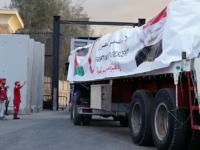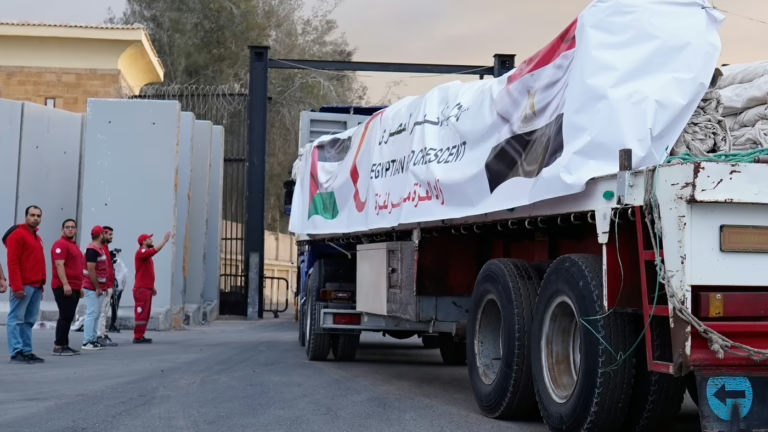Egyptian Red Crescent staff supervise aid trucks crossing into Gaza through the Rafah border following a ceasefire accord between Israel and Hamas on Sunday, October 12, 2025.
Mohammed Arafat/AP
CAIRO – On Sunday, efforts intensified to increase the flow of humanitarian assistance into the Gaza Strip, following a newly brokered ceasefire that many hope will bring an end to the devastating conflict that has persisted for two years.
COGAT, the Israeli authority responsible for coordinating humanitarian aid in Gaza, announced plans to boost aid deliveries to approximately 600 trucks daily, in line with the terms of the ceasefire agreement.
Egypt committed to dispatching 400 aid-laden trucks into Gaza on Sunday, with all shipments subject to inspection by Israeli forces prior to entry.
Video footage from the Associated Press captured numerous trucks lined up on the Egyptian side of the Rafah crossing. The Egyptian Red Crescent confirmed that these shipments include essential items such as medical equipment, shelter materials, food supplies, blankets, and fuel.
Once inspected at the Kerem Shalom crossing by Israeli troops, the aid will be distributed within Gaza. In recent months, the United Nations and its partners have managed to deliver only about 20% of the required aid due to ongoing hostilities, border closures, and Israeli restrictions on imports.
The intensification of Israeli military operations combined with stringent limitations on humanitarian access has precipitated a severe food shortage, with famine conditions emerging in certain areas of Gaza.
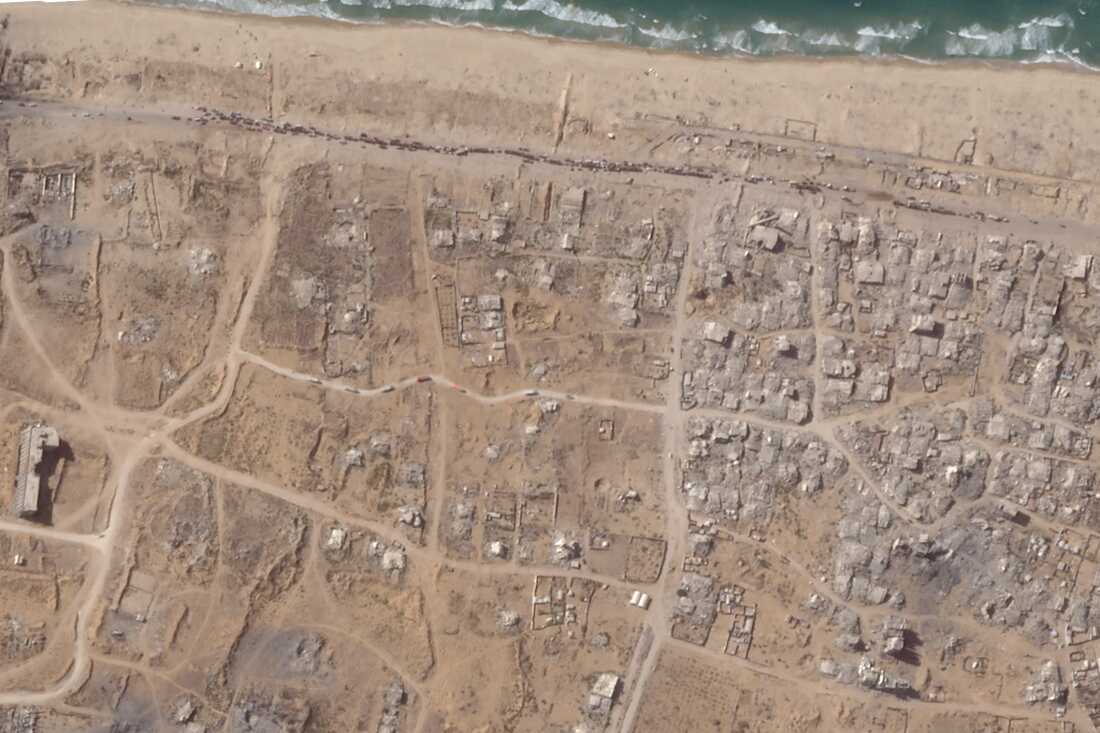
Satellite imagery from Planet Labs PBC reveals a convoy of vehicles traveling northward on Al Rashid Street toward Gaza City, Gaza Strip, on Saturday, October 11, 2025.
Planet Labs PBC/AP
The United Nations has stockpiled roughly 170,000 metric tons of food, medicine, and other critical supplies, ready to be delivered to Gaza once Israeli authorities grant clearance.
Uncertain Prospects for Gaza Humanitarian Fund
The future of the Gaza Humanitarian Fund (GHF), an organization backed by Israel and the United States that took over as Gaza’s main food distributor from the U.N. in May, remains ambiguous.
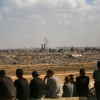
Following the ceasefire, several Palestinians reported that GHF-operated food distribution centers in Rafah and central Gaza were dismantled. Hoda Goda, a former visitor to the Rafah sites, noted that the structures and crowd-control barriers were removed by locals.
Similarly, Ehab Abu Majed confirmed the closure of the distribution point in eastern Khan Younis, with no food deliveries occurring over the past two days. Ahmed al-Masri, residing in the Nuseirat refugee camp, also reported the dismantling of a third site in the Netzarim corridor.
GHF was promoted by Israel and the U.S. as a mechanism to prevent Hamas from controlling aid distribution. However, its operations were chaotic, and hundreds of Palestinians were fatally shot by Israeli forces while attempting to access its four distribution points. The Israeli military stated that warning shots were fired to manage crowds.
A spokesperson for GHF declined to provide comments on Sunday.
Hostage and Prisoner Exchanges, Trump’s Visit in Preparation
Preparations are also underway for the anticipated release of Israeli hostages held in Gaza and Palestinian detainees imprisoned in Israel.
On Saturday, Gal Hirsch, Israel’s coordinator for Hostages and Missing Persons, sent a message-confirmed by one hostage family-advising relatives to prepare for the release of hostages beginning Monday morning.
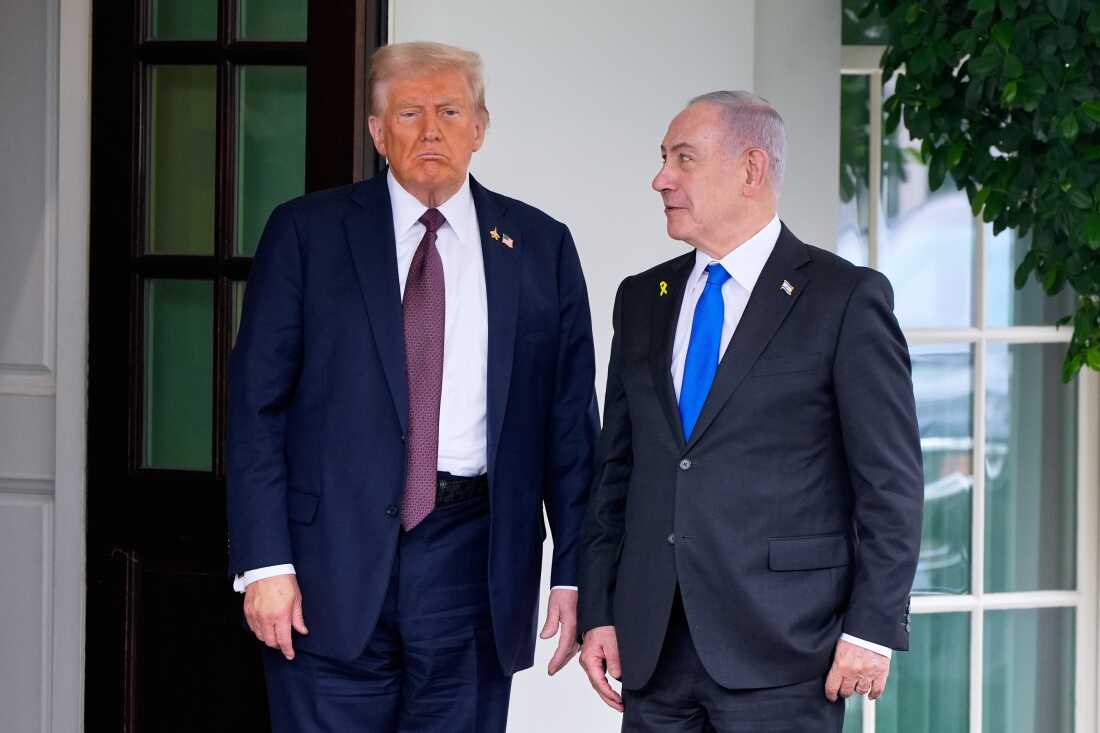
President Donald Trump greets Israeli Prime Minister Benjamin Netanyahu at the White House West Wing on Monday, September 29, 2025.
Alex Brandon/AP
Hirsch confirmed that hospitals and the Rei’im camp are prepared to receive the living hostages, while deceased individuals will be transferred to the Institute of Forensic Medicine for identification.
An international task force will commence efforts to locate hostages who remain unaccounted for beyond the 72-hour window, acknowledging that some bodies may be buried beneath rubble, which could prolong recovery operations.
Israeli officials estimate that approximately 20 of the 48 hostages held by Hamas and allied Palestinian groups in Gaza are still alive, with all survivors expected to be freed on Monday.
U.S. President Donald Trump, instrumental in brokering the ceasefire, is scheduled to arrive in Israel Monday morning. His itinerary includes meetings with hostage families and an address to the Knesset, Israel’s parliament, as announced by the White House.
Following his visit to Israel, Trump will travel to Egypt, where President Abdel-Fattah el-Sissi’s office has announced a “peace summit” co-chaired by Trump, featuring regional and international leaders.
The timeline for releasing approximately 2,000 Palestinian prisoners held in Israel remains unspecified. This group includes 250 individuals serving life sentences and 1,700 others detained during the conflict without formal charges.
Gaza’s health authorities are preparing to receive back 1,900 Palestinian prisoners, many requiring urgent medical care, as well as the bodies of deceased detainees transferred by the Israeli military, according to Dr. Mounir al-Boursh, Director General of Gaza’s Ministry of Health.
Dr. al-Boursh expressed hope that the remains of medical personnel who died in Israeli custody will be among those returned and called for the release of doctors Hossam Abu Safiya and Marwan al-Hams, detained during the war.
Residents Return Amid Ruins
Palestinians have begun returning to neighborhoods vacated by Israeli forces, despite many homes being reduced to rubble.
Satellite images analyzed by The Associated Press show a procession of vehicles moving northward toward Gaza City along Al Rashid Street, which runs parallel to the Mediterranean coastline.
Temporary shelters are visible near Gaza City’s marina, where many residents have sought refuge to avoid Israeli airstrikes targeting urban areas.
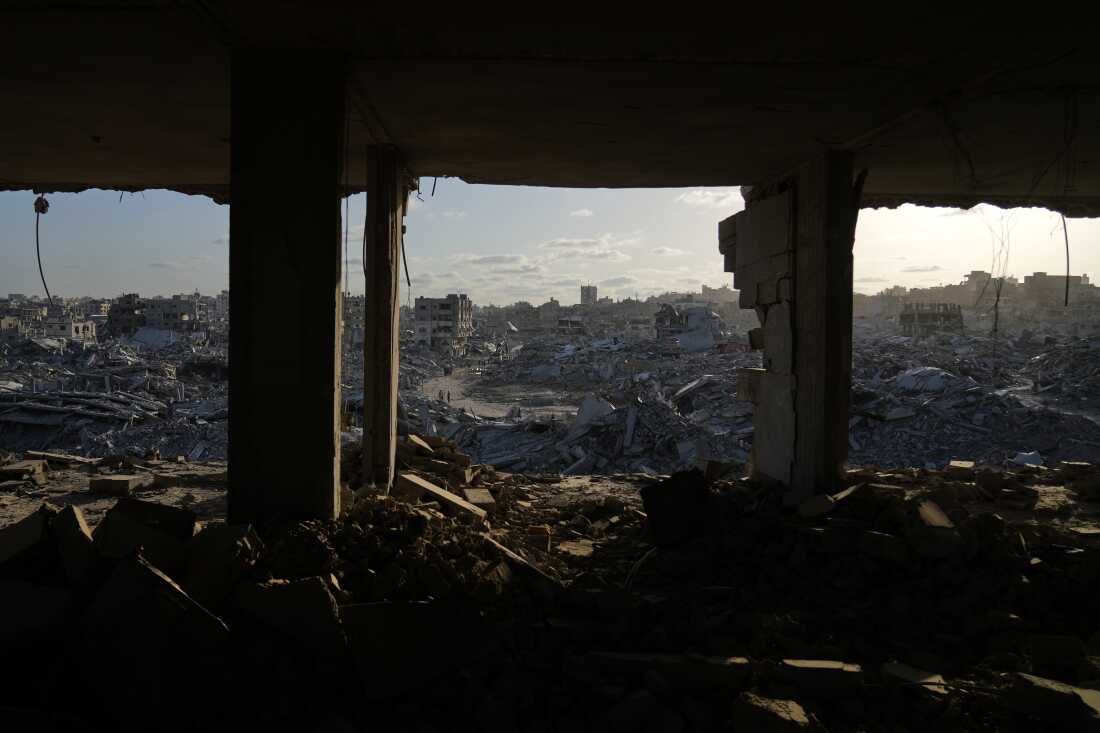
Displaced Palestinians navigate the ruins of the heavily damaged Sheikh Radwan district in Gaza City on Saturday, October 11, 2025, following the ceasefire and hostage release agreement.
Abdel Kareem Hana/AP
Residents report that armed police affiliated with Hamas’ Interior Ministry are patrolling Gaza City and southern areas, ensuring security and escorting aid convoys through zones recently vacated by Israeli forces.
Two Years of Conflict Leave Widespread Destruction
The conflict erupted on October 7, 2023, when Hamas-led militants launched a surprise assault on southern Israel, resulting in approximately 1,200 deaths and the capture of 250 hostages.
In the subsequent Israeli military campaign, Gaza’s Health Ministry reports over 67,000 Palestinian fatalities, including civilians and combatants, with women and children comprising nearly half of the casualties.
The war has devastated vast portions of Gaza, displacing nearly 90% of its 2 million inhabitants. It has also ignited regional tensions, sparked global demonstrations, and led to accusations of genocide, which Israel denies.
While the initial ceasefire and plans for hostage and prisoner exchanges have been welcomed by both Israelis and Palestinians, the long-term durability of the truce remains uncertain. Critical issues such as Gaza’s governance and Hamas’ future role remain unresolved.
Israeli Defense Minister Israel Katz announced on X that he has directed the military to prepare for the dismantling of Hamas’ tunnel network beneath Gaza, to be conducted through an international framework led and supervised by the United States, following the hostages’ release.













